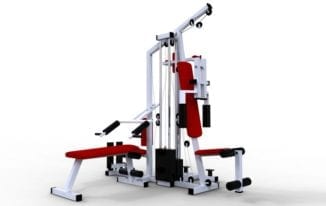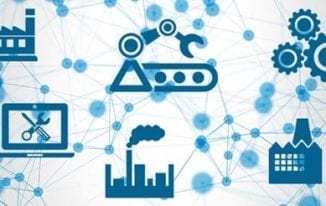
Want your restaurant to stand out from the rest? You’ve got a great menu and now want to excel at service? Consider, a full stack restaurant management system.
A restaurant management system is the complete integrated software system for your restaurant that helps you stay on top of all your essential processes. It is the solution a restaurant needs, across online ordering, table reservations, billing, inventory management, accounting, security, marketing & CRM, analytics, loyalty, payments, employee scheduling, and payroll management.
A restaurant management system lets your software carry out the day to day functions. Customer data that comes into your systems is then forwarded to CRM, Loyalty, Feedback softwares. All this works in perfect harmony via the restaurant management system.
You could further think of these 2 important business functions like this – Operations and Marketing. And technology today plays a significant role in carrying out these 2 broad functions. It either automates the process or simplifies it, either way, it helps your restaurant run better, faster.
Why you need a Restaurant Management System?A restaurant management system simplifies your operations and lets you focus on the tasks that really matter: the food you cook and the guest experience.
Your restaurant management technology can handle (almost) everything else.
Let’s take a look at what a full stack restaurant management system can really do:

Your restaurant management system takes care of your restaurant operations – i.e. billing, printing KOTs, ticketing and financing. The modern-day cloud restaurant POS is power packed with features that will be very advantageous for your business.
Speedy billing: Customers want fast service. In fact, faster the service more likely are your customers to return.To improve customer experience, the turnaround time (or table flip time) is one important metric every restaurant should keep their eye on. Remote accessibility: Your Cloud POS will not only work on-premise but can be operated from anywhere (as long as it is installed on your device). Data security: Your data is a lot safer when it data is stored on remote servers. So a significant reduction in spam/hacking threats for your restaurant data. An increasingly important feature to consider. Constant software updates: The modern cloud POS does not run the risk of becoming obsolete as your software is constantly updated to be in-line with the latest features and technology Cost effective: A cloud POS allows you to make monthly subscription payments instead of a fixed and high one time upfront cost (that was done for the traditional restaurant POS). Data Management and AnalyticsWith data coming in through the POS – the next step is critical. Data management is one. Data is better managed with a Cloud POS as mentioned above – with usage of the best remote servers (like AWS/Rackspace for instance), high data security and constant software updates, your data management needs are taken care of. The second is data reporting and analysis. This part is more strategic in nature. Once data comes in, you as a restaurant owner/manager would want to be on top of things when it comes to getting insights from data.
Supports your Marketing initiativesCustomers should be constantly reminded of what your brand can offer them. Restaurant POS is an excellent channel for getting to know your customers better. How? It has all the data on order history and contact details like email and in some cases even phone numbers.
Bucketing your restaurant’s customers into a few neat categories would help in automating the marketing campaigns and personalising the outreach process. Your own creativity would obviously matter, through the use of good content and visuals to grab attention and communicate.
Complements your Online Ordering software and third-party aggregator linkagesOnline Ordering is setting up your own platform where you can directly get orders from your customers. You save on the commissions to the middlemen (food aggregators).
This data which comes in, gets stored centrally and becomes the hub for further marketing, loyalty management and analytics. Similarly, when you register yourself with third-party aggregators, data again gets pushed to your Restaurant Management System.
Takes care of Inventory ManagementYou as a restaurant owner want to get updates regarding the inventory status at the restaurant. What is not getting utilised, what items are getting depleted. This helps you manage your inventory with timely interventions.
Integrates restaurant functions across outletsYour restaurant POS is the central tool. The nucleus, if you will. As soon as the server punches in customer data, it is fed into the POS. The POS then traffics that data and multiple systems come into play.
Third party Order Aggregator tools, Online Ordering System, CRM, Analytics, Inventory and Loyalty systems are all closely linked to your restaurant POS. Also, a restaurant POS allows you to track your restaurant’s performance centrally, allowing you to be on top of the restaurant management process.
Provides a Single neat interface for all your restaurant functionsWouldn’t it be great to have a single system to manage your entire business? Quick training of new employees is a growing challenge for restaurants. On the job training will be faster and easier when you have a single software that encompasses all the important functions of your restaurant.
Summing UpWith the growing need for automation and simplification of processes, restaurants are increasingly taking to restaurant management systems to help them manage their business better. Restaurant technology is evolving and customers want to see you making use of them. Adapting to the changing landscape of restaurant technology is the need of the hour to stay relevant in the industry.
Related Topics E-Payment for Merchants & Shops in a Cashless Nigeria Mobile Money e-payment in Nigeria e-payment in Nigeria ATM card security Stopping one transaction scratch cards InterSwitch Verve e-payment solution Valucard e-payment Internet Banking in Nigeria Mobile Banking in NigeriaThe post Restaurant Management System: All you need to know appeared first on Nigeria Technology Guide.

If you’re looking to get fit in 2019, you might be considering a gym membership. However, before you commit to a monthly spend, you should think about buying a home multi gym instead. Prices are reasonable, and these exercise machines can easily fit in the corner of a room.
You can perform many exercises – even on the cheapest multi gyms – and target every major muscle group. So, here are five of the best multi gym exercises you can perform.
Leg Curls
Legs are often overlooked when hitting the gym. Thankfully, most multi gyms now come with leg curl attachments, with some machines even including leg press and other accessories.
This exercise is perfect for working out the hamstrings and calf muscles – essential muscles to target if you have small legs and wish to add some size.
Chest Press
To build a bigger, fuller chest, you need to add the chest press (or bench press if done with a barbell, rather than a machine) to your workout routine. Nearly every multi gym available now includes a chest press feature, allowing you to lift heavy weights and build some serious pecs.
In addition to working the chest muscles, this exercise employs the arms and shoulders, providing triceps and deltoids with a thorough workout.
Pull Ups
Notorious for their difficulty, the pull-up is perhaps one of the hardest exercises for beginners. If you have space in your home gym, you could invest in an assisted chin-up machine, but these are expensive and take up space. When buying a gym for your home, you will find most come with a pull-up bar.
Pull-ups are amazing for building a thicker back, and bigger arms, as they recruit the biceps. They are classed as a compound move. This is because they work more than one muscle group (in this case, back and arms)
Shoulder Press
The shoulder press (sometimes referred to as military press) is another compound move. When working out your shoulders, this should be the bread and butter move in your routine. Most home multi gyms include a shoulder press feature, allowing you to target this highly important muscle group.
Cable Curls
Isolate the biceps with some cable curls. This exercise is great for building bigger arms and can be performed as a regular move, or as an alternative to dumbbell curls. Hand grip can be alternated to mimic hammer curls, too.
Final WordsWhen considering your workout options, building a home gym should certainly be on your list. The range of exercises varies from one machine to another, but at the top end of the market, you can purchase compact multi gyms which allow 40+ exercises.
However, the ones listed above are common to most available on the market in 2019.
Related Topics How to Buy a Smartwatch Best Smartwatch Features Benefits of Fitness Apps to Gyms Best Fitness Apps for Android Best Android Phones Best Spin Bike ExercisesThe post Best Multi Gym Workout Exercises appeared first on Nigeria Technology Guide.

The industrial internet of things can help you achieve new heights in your commercial endeavors. You may struggle with keeping track of electrical systems, or deal with breaking parts consistently.
You may always be on the lookout for more information about how your plant is running and what is the most efficient part of your assembly line. Using the industrial internet of things can change that and give you more data points to work from than you ever thought possible.
From packaging to assembly lines, the industrial internet of things has data management covered for complex operations. The challenge lies in knowing how to use the apps and programs available to you in an effort to run the most efficient operation that you can.
The industrial internet of things refers to the way machines connect with each other industrially. Within the industrial internet of things, people interact with apps and data management tools.
The small amounts of data add up to help both people and machines learn and optimize operations. Whether your operation is large or small, you can benefit from using the industrial internet of things in your commercial work. Managing organized data sets is much easier and more efficient than keeping track of little changes manually.
You can optimize commercial efficiency by including the industrial internet of things in your day-to-day routine. The industrial internet of things has many applications.
Some things it can do are log machine hours, measure time, schedule maintenance, and help with logistics and supply chain management. Measuring little things like battery wear or electrical output can really take time to do manually, but you can save a lot of time and energy by letting a machine do this.
One of the major benefits of the industrial internet of things is that you can optimize for efficiency by paying attention to small and large differences in efficiency across the full scale of your operation.
The industrial internet of things gives you an extra set of brains to work with. You can utilize the data tracking capabilities and applications in the industrial internet of things to keep the small changes in efficiency just a click away.
This keeps the data you need to enact changes at your fingertips so that you don’t have to go through as much work to maintain efficiency policies.
The industrial internet of things helps you keep track of the data in your commercial operation. Many managers struggle with creating data sets for their operations. It can be difficult to keep track of micro changes throughout the day over huge commercial operations like plants and machine shops.
Even if you could keep track of everything, you might not have enough time in the day to get it all written down, much less organized into a presentable format. The industrial internet of things is a key solution to this problem.
The answer is simpler than you might think: let a computer keep track of changes for you, and get that data set organized by a computer program.
Related Topics Cheap Android Phones Best Android Phones Security Concerns for IoT Devices Industrial IoT Compare Prices of Mobile PhonesThe post Industrial Internet of Things Can Boost Corporate Efficiency appeared first on Nigeria Technology Guide.
